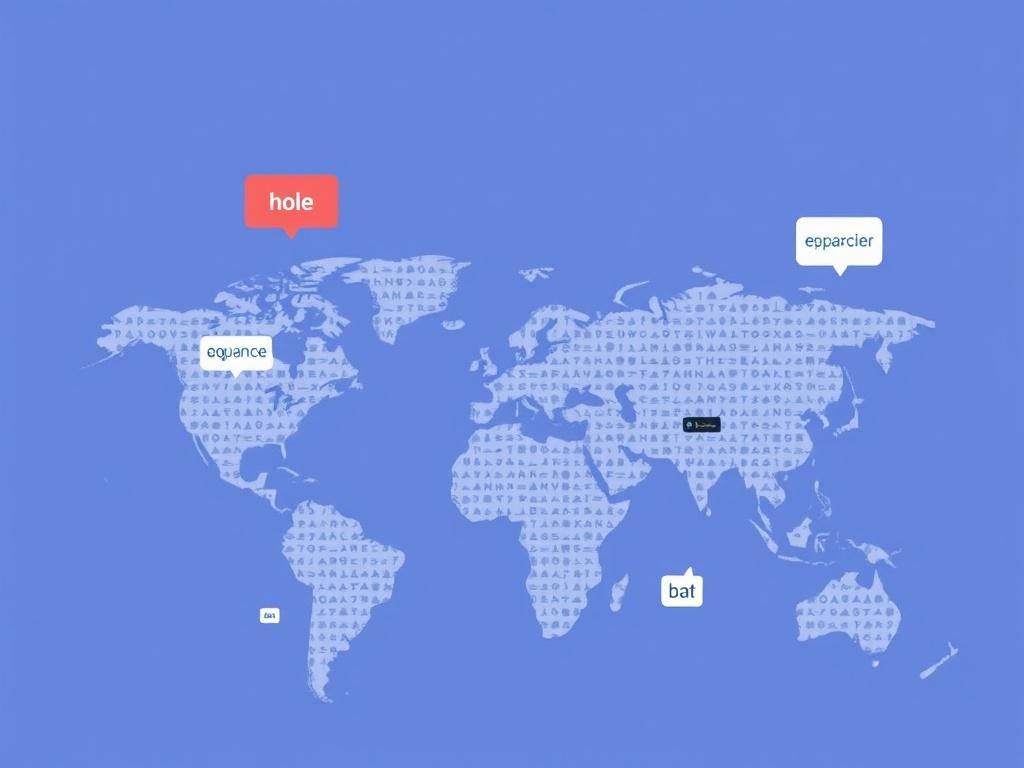Reaching people across borders is no longer a nice-to-have — it’s essential. But speaking to global audiences isn’t just about translating words. It’s about adapting tone, context, cultural cues, visuals, even timing, so your message resonates. With advances in artificial intelligence, this long and often expensive process is becoming smarter, faster, and more scalable. In this article I’ll walk you through what localization really means, how AI can help (and where it can’t), practical workflows you can adopt, tools and metrics to watch, common pitfalls, and a roadmap you can use tomorrow to make your message land better in more places. Think of this as a friendly, practical guide that mixes big ideas with actionable steps, because adapting content for global audiences should feel empowering, not overwhelming.
What Localization Really Means — Beyond Translation
Translation changes words from one language to another. Localization changes the experience so it feels native to a different culture. This distinction matters because good localization preserves intent and function rather than literal wording. When you change content for a new market, you’re adapting idioms, date and number formats, cultural references, humor, images, UX patterns, and sometimes even functionality. Localization covers everything from marketing copy and product UI to legal text and customer support scripts.
A lot of teams conflate translation with localization and end up with awkward phrases, mistranslated humor, or worse — messages that offend. AI can help bridge the gap by offering context-aware suggestions, automating repetition-heavy tasks, and helping teams scale. But human judgment remains essential for cultural sensitivity and brand voice.
How AI Fits Into the Localization Puzzle

AI isn’t a single tool; it’s a set of capabilities: machine translation, natural language understanding (NLU), sentiment analysis, style transfer, content classification, image recognition, and generation. Each plays a role:
Machine Translation
Machine translation models convert text across languages quickly. Modern neural MT systems produce fluent output and are good for drafts or high-volume content. They shine for technical guides, product descriptions, and user comments where speed matters.
Contextual Understanding and Intent Matching
AI can analyze the intent behind a message and map it to localized equivalents. For example, a promotion based on “Back to School” may need an entirely different hook depending on school calendars and cultural perception in different countries. Intent-aware models help to preserve the original purpose while adapting details.
Sentiment and Tone Analysis
Keeping brand tone consistent across languages is challenging. Sentiment analysis and tone detection help identify when translations veer off-brand — whether becoming too formal, too casual, or failing to convey the intended emotional nuance.
Style Transfer and Voice Preservation
Style-transfer techniques can guide AI to write in your brand voice. Provide examples of your tone and the model can generate variations in other languages that mirror that style, making localized copy feel cohesive with the global brand.
Image and UX Localization
AI-driven image tagging and generation help decide which visuals are appropriate for different markets. Automated quality checks can flag imagery with cultural sensitivity risks or suggest region-specific alternatives.
When to Use AI and When to Use Humans
AI reduces cost and increases speed, but it should be used strategically. Here’s a simple way to decide:
- Use AI-first for high-volume, low-risk content: product specs, FAQs, user-generated content, or initial drafts.
- Use a hybrid approach for medium-risk content: marketing campaigns, onboarding flows, or help center articles.
- Use human-led localization for high-risk or brand-sensitive content: legal contracts, core brand messaging, ads with humor, or politically sensitive materials.
AI can produce an excellent first pass, identify patterns, and automate repetitive tasks. Humans should review, refine cultural nuances, and validate final output. This human-in-the-loop model is the practical sweet spot for many organizations.
Practical Workflow: From Source Copy to Localized Launch
A reproducible workflow makes localization predictable. Here’s a step-by-step approach you can implement:
1. Source Content Preparation
Before handing anything off to AI or translators, prepare source content. Use clear, simple language. Avoid idioms and culturally specific references where possible. Tag strings in your CMS for context and maintain a glossary of terms and brand voice guidelines.
2. Content Classification and Segmentation
Not all content needs the same treatment. Use AI to classify content by type, risk, and required fidelity. Segment into buckets: auto-translate, machine-plus-edit, or human-only.
3. Initial Machine Translation and Style Application
Run AI translation for the low- and mid-fidelity buckets. Apply tone and style layer so the translated text approximates brand voice. Use glossaries and term bases to maintain consistency.
4. Human Review and Cultural Adaptation
Native linguists or localization managers review the output. This stage includes transcreation for campaigns, adapting imagery, and ensuring idioms and humor localize appropriately.
5. QA and In-Context Review
Test content in the actual interface or channel. Check layout, truncation, RTL/LTR handling, and imagery. This step often uncovers issues like long French sentences breaking UI elements or numbers formatted incorrectly.
6. Legal and Compliance Checks
Ensure disclaimers, terms, and privacy details meet local regulations. This is crucial for financial, medical, or regulated industries.
7. Launch and Monitor
Deploy localized content and monitor engagement metrics, sentiment, and customer feedback. Use AI to analyze feedback at scale and feed insights back into the localization process.
Tools of the Trade: AI Technologies for Localization
There’s a rich ecosystem of tools. Here’s a table contrasting typical categories and what they’re best for:
| Tool Category | What It Does | Best For |
|---|---|---|
| Neural Machine Translation (NMT) | Converts text across languages with neural networks | Bulk content, product catalogs, initial drafts |
| Translation Management Systems (TMS) | Workflow, version control, glossaries, human collaboration | Team coordination, scaling localization, review workflows |
| Language Models / LLMs | Generates language, adapts tone, performs style transfer | Copywriting, transcreation, producing market-specific variants |
| Sentiment and NLU Tools | Analyzes tone, intent, and emotional cues | Content validation, customer feedback analysis |
| Computer Vision | Recognizes, tags, and generates images | Image localization, detecting sensitive visuals |
| QA Automation | Checks formatting, placeholders, truncation, pseudo-localization | Pre-launch testing, UI verification |
You don’t need every tool. Start with a TMS that integrates a reliable MT engine and allows human editors to review. Add LLMs for creative tasks and sentiment/NLU for monitoring.
Case Studies: How AI Helps in Real Situations
Let’s look at three simplified examples to make things concrete.
E-commerce Catalog Scaling
A mid-size retailer wanted to expand from the US to Germany and Brazil. They had tens of thousands of SKUs. Strategy: use NMT to translate product titles and descriptions, run an AI-based taxonomy mapper to place categories correctly, and have human editors review high-traffic SKUs. Result: 80% automated localization, 20% human review, faster time-to-market and improved accuracy for best sellers.
Global Campaign Launch
A software company planned a launch with culturally nuanced messaging. They used LLMs to generate multiple localized variations of the campaign text, then had native marketers select and transcreate the best versions. AI helped produce creative options much faster, and the team saved weeks in ideation. The final campaigns had higher engagement because the local teams felt ownership.
Customer Support at Scale
A SaaS provider used NLU to classify support tickets and translate inbound messages, then routed tickets to regional agents. AI suggested draft responses that agents adapted. Response times dropped dramatically, and sentiment improved because agents could focus on complex issues rather than routine translation.
Metrics That Matter: How to Measure Localization Success
If you localize without measuring, you won’t know what’s working. Track a mix of quality, operational, and business metrics:
- Quality: native reviewer acceptance rates, post-edit effort (time spent editing machine output), and linguistic QA scores.
- Operational: throughput (content localized per week), cycle time (request to publish), and cost per word.
- Business: conversion rates in localized markets, engagement metrics (time on page, bounce rate), and customer satisfaction or NPS by locale.
Use A/B testing when possible to compare localized variations. Also track sentiment over time to catch tone or cultural missteps early.
Common Pitfalls and How to Avoid Them
Localization projects often stumble in predictable ways. Here are the traps and how to avoid them.
Pitfall: Treating Localization as an Afterthought
If localization is squeezed in at the end, it feels rushed and will cost more. Avoid this by planning for localization from the start, using simple copy and providing context for translators/AI.
Pitfall: Over-Reliance on Literal Translation
Literal translations can read awkwardly or miss the point. Use transcreation for marketing and leverage AI plus human review for cultural nuance.
Pitfall: Ignoring Regional Variants
Spanish in Spain differs from Spanish in Mexico; Portuguese in Portugal differs from Brazil. Account for variants, dialects, and legal differences.
Pitfall: Not Testing in Context
Text that looks fine in a CMS might break UI. Always perform in-context QA to catch truncation, layout, and RTL issues.
Pitfall: Failing to Close the Feedback Loop
Localization is iterative. Use post-launch analytics and customer feedback to refine glossaries, style guides, and AI prompts.
Practical Tips: Prompts, Glossaries, and Style Guides
Some practical artifacts make AI localization consistent and scalable.
Create a Living Glossary
Maintain a bilingual glossary of brand terms, product names, and preferred translations. Feed this into your TMS and AI prompts so important terms stay consistent.
Build a Style Guide With Examples
Give examples of acceptable tone, formality level, and phrasing for each language. Show examples of good and bad translations. AI models perform much better with clear constraints.
Use Prompt Engineering for LLMs
When you ask an LLM to adapt copy, include: target locale, tone, audience persona, format constraints (character limits), and any taboo topics to avoid. For routine tasks, save prompt templates and update them with feedback.
Pseudo-localization for QA
Before translating, use pseudo-localization to simulate longer text or RTL languages and identify UI issues early. This simple step saves a lot of rework.
Legal, Privacy, and Ethical Concerns
Globalization brings legal and ethical complexity. Remember these key points:
- Data sovereignty: Some countries restrict where user data can be processed. Ensure your AI providers and TMS comply with local rules.
- Privacy: If you use customer content for model training, obtain consent or anonymize data. Check provider policies about model usage rights.
- Cultural sensitivity and bias: AI models can reflect biases. Rely on local reviewers to catch issues and build diverse review teams.
- Copyright and IP: Generated content may reuse patterns from training data. Be cautious with proprietary or creative material and consult legal counsel if needed.
Legal teams should be looped in early for regulated products or markets with strict advertising laws.
Organizational Models for Scalable Localization
Different companies adopt different structures depending on size and needs.
Centralized Localization Team
A single team owns localization standards, tools, and vendor relationships. Advantage: consistency and efficiency. Disadvantage: may be less responsive to local nuances.
Decentralized Local Teams
Regional teams own localization for their markets. Advantage: cultural sensitivity and speed. Disadvantage: risk of inconsistent global brand voice.
Hub-and-Spoke
A centralized hub defines standards, glossaries, and tools, while regional spokes own execution and review. This hybrid often scales best: standardization with local autonomy.
Example: Localizing a Marketing Email Using AI
To make this concrete, here’s a simplified, practical flow for localizing an email campaign.
- Source copy is written in simple English and tagged with campaign goal and target persona.
- AI model translates the email to the target language and applies brand tone instructions.
- Native reviewer transcreates headlines and subject lines to optimize open rates.
- Images are checked with computer vision for cultural appropriateness and swapped if needed.
- QA runs to ensure no truncation in the email client and all personalization tokens display correctly.
- Campaign launched; AI monitors open, click, and unsubscribe rates and flags anomalies.
- Feedback from local teams updates the glossary and prompt templates for the next campaign.
This flow shows how AI speeds repetitive steps while humans retain control over strategic choices.
Localization for Voice, Video, and Multimedia
Text is only part of the story. AI also helps with voice-over, subtitling, and dubbing. Speech synthesis and voice-cloning technologies can produce localized audio quickly, and automatic subtitlers speed up video workflows. But be careful: voice has personality, and cloned voices can cross privacy or consent boundaries. Always get permission for voice usage and use native speakers for core branding assets.
Video localization often benefits from transcreation: changing scripts, visuals, and pacing for local audiences. Use AI to generate subtitle drafts and spoken translations, but have local creatives adapt delivery and visual cues.
Scaling Localization: Prioritization Framework
You can’t localize everything at once. Use a prioritization framework that balances market potential, strategic importance, and resource cost.
| Factor | Why It Matters | How to Score |
|---|---|---|
| Market Size / Revenue Potential | Bigger markets justify more investment | High/Medium/Low |
| Strategic Fit | Aligns with company growth goals | Must-have / Nice-to-have |
| Content Complexity | Complex content needs more human effort | High/Medium/Low |
| Speed to Market | Timing sensitivity for campaigns | Urgent / Flexible |
Assign a score to each locale and content type, then prioritize accordingly. Use AI to tackle high-volume, lower-priority items first and allocate human resources to mission-critical content.
Preparing Your Team: Skills and Roles

To succeed with AI-powered localization, your team needs these roles and capabilities:
- Localization Lead: owns strategy, vendor selection, and metrics.
- TMS/Tool Admin: sets up integrations and maintains term bases.
- AI/Prompt Specialist: crafts and optimizes prompts for LLMs and automations.
- Localization Engineers: implement i18n, handle formatting, and fix UI issues.
- Native Reviewers and Cultural Advisors: ensure cultural fit and brand voice.
- Analytics and Product Owners: measure results and iterate on content performance.
Training matters. Provide regular workshops on tools and share post-mortems so teams learn from both wins and failures.
Future Trends to Watch
Localization and AI are both evolving quickly. A few trends to keep an eye on:
More Context-Aware Models
Models that understand whole documents, product flows, and user behavior will improve coherence across content.
Real-Time, In-Context Localization
Expect more real-time features: live chat translation with sentiment-aware tone adjustment, and UI strings that adapt on the fly based on user preferences.
Edge AI for Privacy-Sensitive Locales
On-device or edge processing will help markets with strict data rules, enabling private translation and moderation without cloud transfers.
Multimodal Localization
AI will better handle combined text, audio, and visuals — adapting not just language but the entire sensory experience.
Democratization of Creative Localization
LLMs will enable local teams and even community contributors to propose localized content faster, shifting the bottleneck to review and governance.
Checklist: Launching a Localized Campaign with AI
Use this checklist to avoid common missteps:
- Prepare source copy with clear context and brand guidelines.
- Create or update glossary and style guide for the target locale.
- Segment content by required fidelity and apply AI/human allocation.
- Run machine translation and tone-preserving style transfer where applicable.
- Have native reviewers transcreate headlines and sensitive copy.
- Perform in-context QA on final UI, emails, or ads.
- Run legal and compliance checks for local regulations.
- Launch and monitor localized metrics and feedback.
- Ingest post-launch learnings into glossary and prompt templates.
Final Thoughts: Balancing Speed, Cost, and Cultural Fidelity

AI makes localization faster and more accessible, but it’s not a magic wand. The best results come from mixing automation with human creativity and cultural insight. Treat AI as a force multiplier: it handles volume, consistency, and draft generation, while humans handle nuance, strategy, and final judgment. Start small, measure impact, and iterate. Build workflows that let you scale responsibly and respect local differences. Localization done well isn’t an expense — it’s an investment in relevance, trust, and growth.
Conclusion
Localization is about empathy as much as technology: understanding how people think, speak, and feel in each market, and using AI to scale that understanding without losing humanity. By combining clear source content, robust glossaries, pragmatic AI use, native review, and disciplined measurement, teams can adapt messages that feel native and perform better. Start with the content that will move the needle, create repeatable workflows, and keep humans in the loop for the moments that matter — that balanced approach is how AI helps your message cross borders and land with impact.
